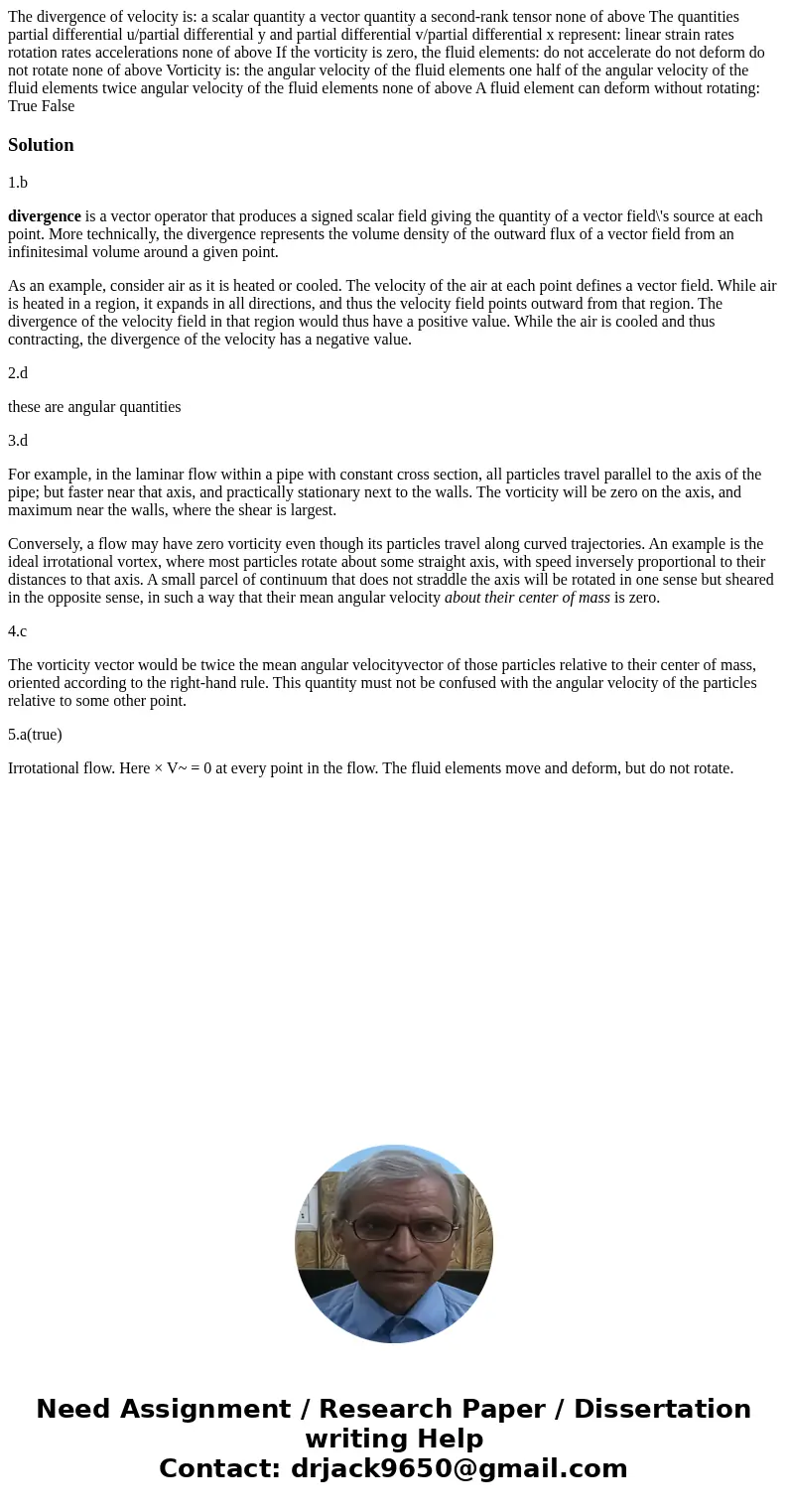The divergence of velocity is a scalar quantity a vector qua
Solution
1.b
divergence is a vector operator that produces a signed scalar field giving the quantity of a vector field\'s source at each point. More technically, the divergence represents the volume density of the outward flux of a vector field from an infinitesimal volume around a given point.
As an example, consider air as it is heated or cooled. The velocity of the air at each point defines a vector field. While air is heated in a region, it expands in all directions, and thus the velocity field points outward from that region. The divergence of the velocity field in that region would thus have a positive value. While the air is cooled and thus contracting, the divergence of the velocity has a negative value.
2.d
these are angular quantities
3.d
For example, in the laminar flow within a pipe with constant cross section, all particles travel parallel to the axis of the pipe; but faster near that axis, and practically stationary next to the walls. The vorticity will be zero on the axis, and maximum near the walls, where the shear is largest.
Conversely, a flow may have zero vorticity even though its particles travel along curved trajectories. An example is the ideal irrotational vortex, where most particles rotate about some straight axis, with speed inversely proportional to their distances to that axis. A small parcel of continuum that does not straddle the axis will be rotated in one sense but sheared in the opposite sense, in such a way that their mean angular velocity about their center of mass is zero.
4.c
The vorticity vector would be twice the mean angular velocityvector of those particles relative to their center of mass, oriented according to the right-hand rule. This quantity must not be confused with the angular velocity of the particles relative to some other point.
5.a(true)
Irrotational flow. Here × V~ = 0 at every point in the flow. The fluid elements move and deform, but do not rotate.

 Homework Sourse
Homework Sourse